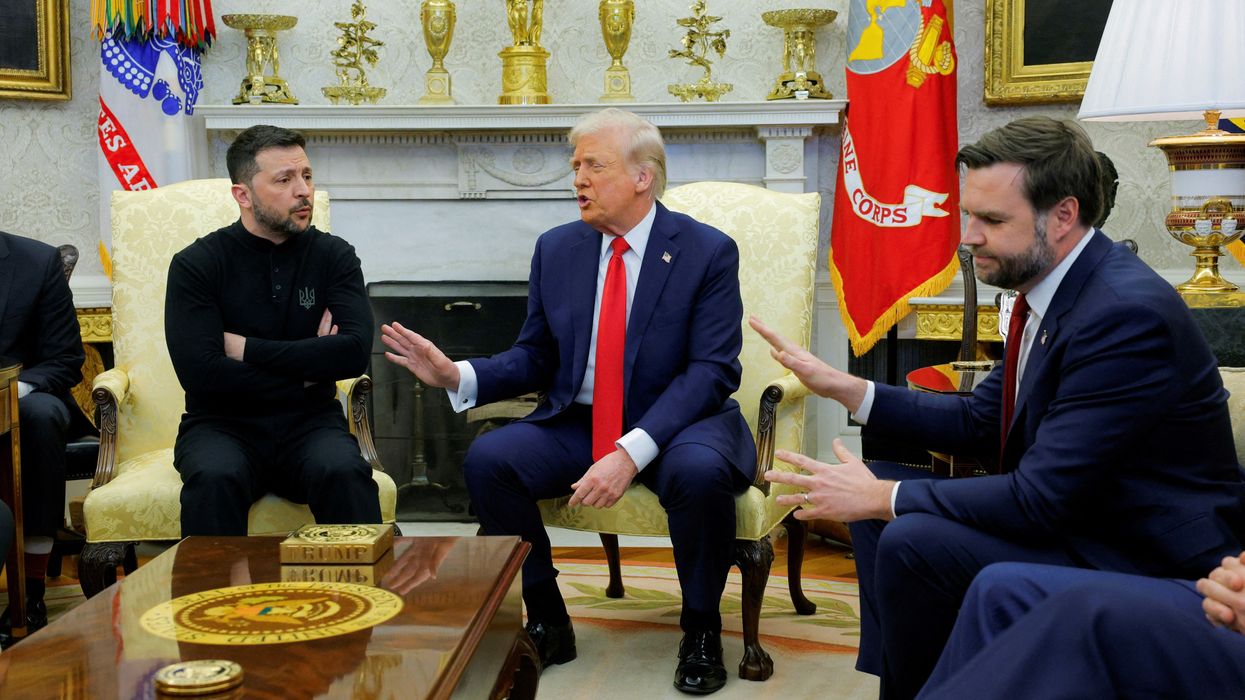On the House floor this week, Democratic House Armed Services Chairman Adam Smith called the final fiscal year 2020 National Defense Authorization Act (NDAA) “the most progressive defense bill we have passed in decades.” Shortly thereafter, Congressional Progressive Caucus Peace and Security Task Force Co-Chair Ro Khanna said it was “Orwellian to call this bill progressive.”
So who’s right?
To Smith’s credit, the bill includes twelve weeks of paid parental leave for federal workers, a long-overdue progressive victory. Smith’s statement also alluded to the myriad important provisions in the bill that do things like require oversight of our military’s inflicting of civilian casualties, prevent Trump from withdrawing from the remaining arms control treaties, and allocates 4,000 visas to Afghans whose lives are at risk for their service to the U.S. government.
But the parental leave provision itself was weakened from its original form and its inclusion continues the dangerous trend that domestic policy wins must come at the hands of giveaways to the Pentagon and defense industry. That Trump also claimed victory for it just adds salt to the wound. The kind of common-sense measures that were included ought to be the rule not the exception for lawmakers, regardless of party. And they do not make the NDAA “progressive” on the whole.
This year’s NDAA is status quo; that is to say, it advances the worldview that global challenges can be solved by military solutions. It authorizes $738 billion for the Pentagon, weapons, and war-making — an increase of $22 billion from last year, or roughly four times the size of the entire budget of the Environmental Protection Agency. The bill also establishes the Trump-Pence priority, Space Force, an entirely new branch of the military that will likely only create waste and accelerate the militarization of space. Thirty-eight organizations, including my own, called this NDAA a “disaster,” and a “near complete capitulation” for failing to include a single major victory to constrain Trump’s foreign policy.
The NDAA should serve as a roadmap for ending needless conflict and charting a new, better, and more sustainable direction for our country and the world, not as a vehicle for unfettered militarism. A starting point for a more progressive NDAA would be this summer’s House-passed bill, which included some extraordinary wins that demonstrated to the public how foreign and defense policy might differ from Trump’s if Democrats controlled one full branch of government, let alone two. The bill signaled overwhelming support for finally ending U.S. complicity in the Yemen war and realigning the U.S.-Saudi and U.S.-Emirati relationships; repealing decades-old authorizations for use of force that have been the basis for our endless wars; and scaling back excessive nuclear weapons policies.
But while we frame these and other wins as “progressive,” we must be careful not to label the NDAA itself as such. Even if the final text had kept these critical provisions, the bill still would have authorized $733 billion for the Pentagon and maintained the problematic use of the overseas contingency operations mechanism which has morphed into the Department’s slush fund. The reality is the NDAA in its current form could never truly be “progressive.”
Smith may have been right in calling it the most progressive defense bill in decades. But even if it were true, it’s a low bar. We need a new approach — one that goes beyond tacking a few constraints into an otherwise pernicious law.
To pursue our vision of global engagement that uplifts and reinforces all peoples’ desire for dignity, prosperity, and self-determination, we must address the biggest challenges we face this century, including the climate catastrophe, global corruption and authoritarianism, and mass inequality, and reject militarism in all of its forms as a viable solution. That means stopping outsourcing our security to defense contractors and investing in other tools like diplomacy, development, and peacebuilding that can help build sustainable peace around the world.
Legislatively, we must not only invest in new tools, but also overhaul current non-military tools that often serve to exacerbate these challenges rather than solve them. To name a few: change sanctions law to limit the use of broad-based and sectoral sanctions which harm everyday people while reinforcing regime behavior, end the blanket provision of U.S. security assistance to partners who violate human rights, and strengthen accountability mechanisms for war crimes and other violations of international law.
We must go beyond rearguard attempts to restrain military action, and build instead an alternative approach to foreign policy. On the path toward that vision, and until it is rewritten totally, the NDAA may remain a vehicle to attach and advance some of these changes. But so long as it resembles the 2020 NDAA, don’t call it progressive.
















